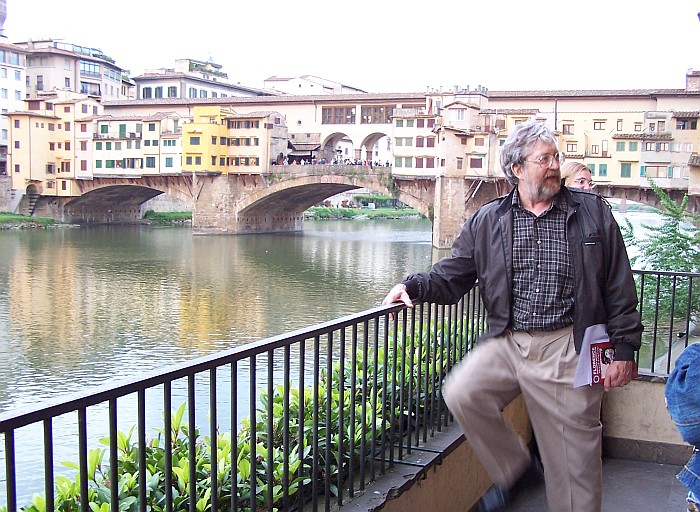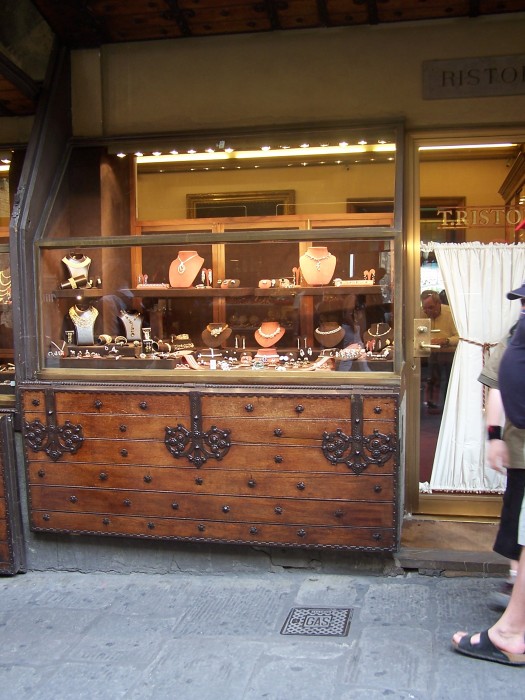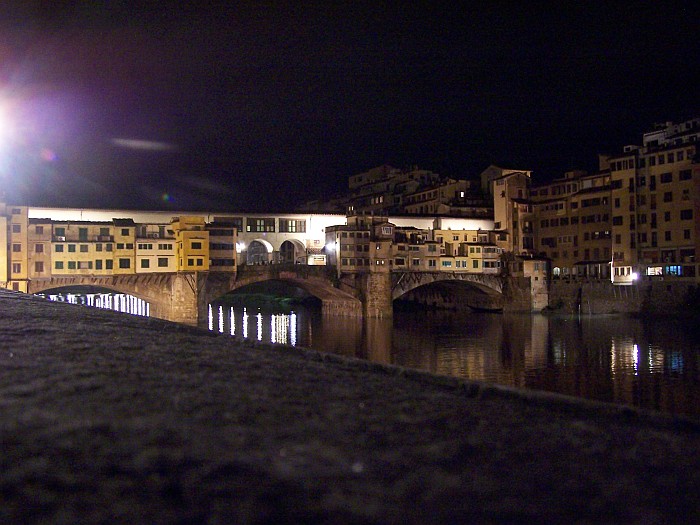(Italian pronunciation: pon-tay vay-kyoh)


The Ponte Vecchio is the oldest bridge in Florence, not only because it is the only one which survived WW II, but also because it stands on the site of at least three precedent bridges; one in Roman times, the one that was ruined in 1117, and the one destroyed when the Arno flooded in 1333. On July 18th 1345 the new bridge was finished: its 43 little shops brought to the Commune 80 golden Florin a year. The bridge so greatly admired now was built by Neri di Fioravante in 1345 as a solid but elegant structure with three arches. It is characterized by the small houses that line both sides of the bridge. In the 14th century these rows of buildings had a much more regular appearance, but as time went by various changes and additions led to their current picuresque varitey. At about the center of the span over the river, the buildings are interrupted by a widening of the roadway, thus furnishing a fine view of the Arno and the other bridges. Originally, it was at the same time, a bridge, a market and a square. Even today with its extraordinary architectural and urban features, the Old Bridge is a symbol of Florence. The bridge crosses the river in its narrowest point and it is the oldest bridge of Florence. It has three bays and it is so wide that it contains two porticoes with shops that once were butchers’ or greengrocers’. At the end of 16th century, Ferdinand the 1st settled goldsmiths and jewelers in the shops. This bridge was the only one which the German army saved from the bombs. The big flood in 1966 injured the bridge very much and also the shops, so that many jewels were lost.



Vasari's Corridor passes along over the bridge, above the buildings. It allowed Cosimo I to reach Palazzo Pitti from Palazzo Vecchio without running any risks. Ever since the 16th century the shops on the bridge have been the laboratory and shops of goldsmiths. Earlier, they housed butcher shops.

